I would like to fully understand type hierarchy of the C11 language and present it graphically (a tree diagram would be perfect). The standard does not provide any figure for this issue – there are 30 points describing individual types and relations between them. I'd like to draw it.
My attempt started from obtaining the ISO/IEC 9899:201x Committee Draft N1570 and extracting all the essential statements from section 6.2.5 of the document. Then, I started to rearrange the knowledge in a form of a tree. Let me present my work in two steps.
Step 1: points 1–15
The extracted knowledge (point within section 6.2.5 + specified production):
- 1 types = object types + function types;
- 4 standard signed integer types =
signed char,short int,int,long int,long long int; - 4 signed integer types = standard signed integer types + extended signed integer types;
- 6 standard unsigned integer types =
_Bool,unsigned char,unsigned short int,unsigned int,unsigned long int,unsigned long long int; - 6 unsigned integer types = standard unsigned integer types + extended unsigned integer types;
- 7 standard integer types = standard signed integer types + standard unsigned integer types;
- 7 extended integer types = extended signed integer types + extended unsigned integer types;
- 10 real floating types =
float,double,long double; - 11 complex types =
float _Complex,double _Complex,long double _Complex; - 12 floating types = real floating types + complex types;
- 14 basic types =
char+ signed integer types + unsigned integer types + floating types; - 15 character types =
char,signed char,unsigned char.
And the resulting structure:
types
object types
function types
basic types
char
sίgned integer types
standard sίgned integer types
signed char, short int, int, long int, long long int
extended sίgned integer types
unsίgned integer types
standard unsίgned integer types
_Bool, unsigned char, unsigned short int, unsigned int,
unsigned long int, unsigned long long int
extended unsίgned integer types
floating types
real floating types
float, double, long double
complex types
float _Complex, double _Complex, long double _Complex
standard integer types
standard sίgned integer types
standard unsίgned integer types
extended integer types
extended sίgned integer types
extended unsίgned integer types
character types
char, signed char, unsigned char
Step 2: points 16–24
The remaining statements:
- 16 enumerated types;
- 17 integer types =
char+ signed integer types + unsigned integer types + enumerated types; - 17 real types = integer types + real floating types;
- 18 arithmetic types = integer types + floating types;
- 20 derived types = array types, structure types, union types, function types, pointer types, atomic types;
- 21 scalar types = arithmetic types + pointer types;
- 21 aggregate types = array types + structure types;
- 24 derived declarator types = array types + function types + pointer types.
And the final C11 type system structure:
types
object types
function types
basic types
char
sίgned integer types
standard sίgned integer types
signed char, short int, int, long int, long long int
extended sίgned integer types
unsίgned integer types
standard unsίgned integer types
_Bool, unsigned char, unsigned short int, unsigned int,
unsigned long int, unsigned long long int
extended unsίgned integer types
floating types
real floating types
float, double, long double
complex types
float _Complex, double _Complex, long double _Complex
standard integer types
standard sίgned integer types
standard unsίgned integer types
extended integer types
extended sίgned integer types
extended unsίgned integer types
character types
char, signed char, unsigned char
real types
integer types
char
sίgned integer types
standard sίgned integer types
signed char, short int, int, long int, long long int
extended sίgned integer types
unsίgned integer types
standard unsίgned integer types
_Bool, unsigned char, unsigned short int, unsigned int,
unsigned long int, unsigned long long int
extended unsίgned integer types
enumeration types
real floating types
float, double, long double
scalar types
arithmetic types
integer types
char
sίgned integer types
standard sίgned integer types
signed char, short int, int, long int, long long int
extended sίgned integer types
unsίgned integer types
standard unsίgned integer types
_Bool, unsigned char, unsigned short int, unsigned int,
unsigned long int, unsigned long long int
extended unsίgned integer types
enumeration types
floating types
real floating types
float, double, long double
complex types
float _Complex, double _Complex, long double _Complex
pointer types
derived types
array types
structure types
unίon types
function types
pointer types
atomic types
aggregate types
array type
structure type
derived declarator types
array type
structure type
pointer type
Now I need to reduce the structure (ideally to a single tree) or find a more tricky way to represent the relations. I would like to came out with a nice cheet-sheet for the C11 typing system. Any ideas?
